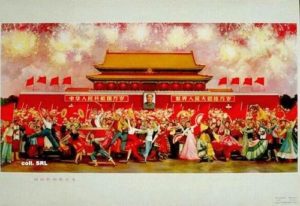ETHNIC MINORITY IDENTITY IN NEW ERA CHINA
Blog one of two on China’s new ideology
The 19th Chinese Communist Party Congress, in October 2017, not only anointed Xi Jinping as dear supreme leader, his Thought is now enshrined as the ideology governing China for the foreseeable future, and well beyond.
What did this decisive CCP Congress actually decide, especially for Tibet and the Tibetans? Is there a way of discerning clearly, despite the thicket of slogans, what has changed?
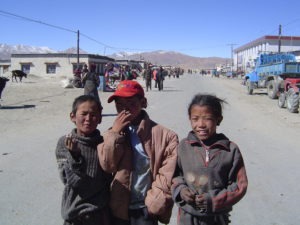 One way of analysing the significant shifts is to pay close attention to the language of the Party Congresses, held every five years, and take their emphases and omissions seriously. Fortunately, we have the close reading done by Jessica Batke, comparing 2017 with 2012, to guide us:
One way of analysing the significant shifts is to pay close attention to the language of the Party Congresses, held every five years, and take their emphases and omissions seriously. Fortunately, we have the close reading done by Jessica Batke, comparing 2017 with 2012, to guide us:
“The 2012 report said the party should ‘safeguard ethnic minorities’ legitimate rights and interests, consolidating and developing socialist ethnic minority relations of equality, unity, mutual assistance, and harmony’ (保障少数民族合法 权益,巩固和发展平等团结互助和谐的社会主义民族关系). The 2017 report has no mention of guaranteeing rights and interests. Instead, it says the party should ‘strengthen contact, exchanges, and blending between all ethnicities, promoting all ethnicities to be packed closely together like pomegranate seeds’ (加强各民族交往交流交融,促进各民族 像石榴籽一样紧紧抱在一起).  Similarly, the 2012 report encouraged protection of ethnic minority culture; this notion is absent from the 2017 report. A 2012 reference to “traditional Chinese medicine and traditional medicine of ethnic minorities” was whittled down to “traditional Chinese medicine” in 2017. None of these changes are surprising if considered in the context of the ongoing and overwhelming securitization of both Tibet and Xinjiang (which the party describes in its review of the last five years as “innovations in ethnic and religious work” (民族宗教工作创新)). It appears that the PRC’s perceived security needs have finally trumped the CCP’s historical attachment to the idea that it supports and represents all the country’s ethnic groups equally. Thus this report may signal the point at which even nominal support for protecting ethnic minority culture begins to fade away, being subsumed by the notion of the “Chinese race” (中华民族). Religion, separate from ethnic concerns, only receives one other mention in the 18th and 19th Party Congress work reports. In 2012, the report mandated the CCP “comprehensively implement the party’s basic policy on religious work and fully leverage to the positive role that religious figures and believers can play in promoting economic and social development” (全面贯彻党的宗教工作基本方针,发挥宗教界人士和 信教群众在促进经济社会发展中的积极作用); in other words, “impose controls on religion but allow it to work in service of the party’s goals.” In 2017, this became “comprehensively implement the party’s basic policy on religious work, persist in the direction of the Sinicization of our country’s religions, and actively guide religions to adapt to socialist society” (全面贯彻党的宗教工作基本方针,坚持我国宗教的中国化方向, 积极引导宗教与社会主义社会相适应); or, “impose controls on religion and remould it until it takes a shape the party likes.”[1]
Similarly, the 2012 report encouraged protection of ethnic minority culture; this notion is absent from the 2017 report. A 2012 reference to “traditional Chinese medicine and traditional medicine of ethnic minorities” was whittled down to “traditional Chinese medicine” in 2017. None of these changes are surprising if considered in the context of the ongoing and overwhelming securitization of both Tibet and Xinjiang (which the party describes in its review of the last five years as “innovations in ethnic and religious work” (民族宗教工作创新)). It appears that the PRC’s perceived security needs have finally trumped the CCP’s historical attachment to the idea that it supports and represents all the country’s ethnic groups equally. Thus this report may signal the point at which even nominal support for protecting ethnic minority culture begins to fade away, being subsumed by the notion of the “Chinese race” (中华民族). Religion, separate from ethnic concerns, only receives one other mention in the 18th and 19th Party Congress work reports. In 2012, the report mandated the CCP “comprehensively implement the party’s basic policy on religious work and fully leverage to the positive role that religious figures and believers can play in promoting economic and social development” (全面贯彻党的宗教工作基本方针,发挥宗教界人士和 信教群众在促进经济社会发展中的积极作用); in other words, “impose controls on religion but allow it to work in service of the party’s goals.” In 2017, this became “comprehensively implement the party’s basic policy on religious work, persist in the direction of the Sinicization of our country’s religions, and actively guide religions to adapt to socialist society” (全面贯彻党的宗教工作基本方针,坚持我国宗教的中国化方向, 积极引导宗教与社会主义社会相适应); or, “impose controls on religion and remould it until it takes a shape the party likes.”[1]
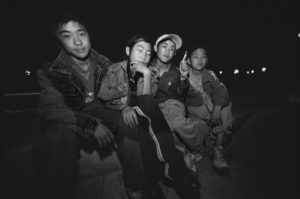 The future of all Chinese citizens, packed together like pomegranate seeds, each one a rhomb dodecahedron pressing against the next, is a vision of an urban high-density future which is explicitly central to China’s strategy for achieving the great rejuvenation. Urbanisation is China’s answer to most problems, from access to health care, electricity, education, culture, employment and accumulation of wealth. High-density urbanisation also happens to be ideal for grid management and intensive surveillance. The moment a citizen experiences discontent at being a rhomb dodecahedron pressed up against 12 other rhomb dodecahedrons on all sides, the cameras will notice and the grid captain can intervene.
The future of all Chinese citizens, packed together like pomegranate seeds, each one a rhomb dodecahedron pressing against the next, is a vision of an urban high-density future which is explicitly central to China’s strategy for achieving the great rejuvenation. Urbanisation is China’s answer to most problems, from access to health care, electricity, education, culture, employment and accumulation of wealth. High-density urbanisation also happens to be ideal for grid management and intensive surveillance. The moment a citizen experiences discontent at being a rhomb dodecahedron pressed up against 12 other rhomb dodecahedrons on all sides, the cameras will notice and the grid captain can intervene.
The claustrophobia of becoming a pomegranate seed in a high rise apartment block may not appeal to Tibetans, long accustomed to the open range, making use of large tracts of marginal land, on the move so as to maintain a light touch. However, in Chinese tradition, pomegranates signify fertility, abundance, posterity, numerous and virtuous offspring, and a blessed future.[2]
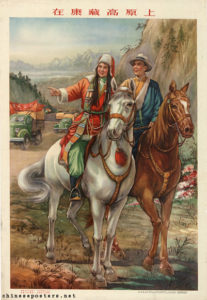 These days, official ideology is seldom poetic, much less so than when Mao declared women hold up half the sky. The injunction to all ethnicities to hold together like pomegranate seeds (Xiàng shíliú zǐ像石榴籽) is memorable, an auspiciously red-coloured vision of harmony and prosperity.
These days, official ideology is seldom poetic, much less so than when Mao declared women hold up half the sky. The injunction to all ethnicities to hold together like pomegranate seeds (Xiàng shíliú zǐ像石榴籽) is memorable, an auspiciously red-coloured vision of harmony and prosperity.
This metaphor manifests in new era ideology as a culmination of its frequent use in recent years, usually directed at ethnic minority nations, urging them to move from their homelands, mingle and intermarry more often with Han, become fluent in standard Chinese Putonghua, in short, assimilate.[3]
UNWRAPPING THE PACKAGE
The increased emphasis on assimilation and reduced emphasis on ethnic minority identity are the most overt aspects of China’s new era ideology impacting on Tibet. However, the whole point of an ideology is that it provides a package, wrapping the concerns of Tibetans in new clothing, reframing the debate.
The master narrative of new era ideology is that China has shifted decisively from quantity to quality, from economic growth as the sole metric of success to a much more inclusive embrace of quality of life, including quality of environment. This is the celebrated “Xi Jinping Thought.” Included in this general shift is a commitment to goals which in themselves seem reasonable, even laudable, such as poverty alleviation, environmental protection, climate change carbon sequestration, and extending health and education services to those who have experienced inequality. It is only when one drills down, to discern what each of these seemingly positive policy objectives mean in practice, on the ground, in Tibet, that one realises that every one of these objectives is a rationale for depopulating Tibet, removing Tibetans from their lands, to concentrate them, like pomegranate seeds, in cities.
 How is this possible? A succinct version of new era ideology was delivered at the 2018 Davos World Economic Forum, in a little-reported speech, by veteran central planner and CCP Politburo member Liu He: “In his speech, Liu also spoke of the ‘three critical battles’ China’s economy faces. The first of these, the transition from rapid growth to high quality development, he characterized as a change from ‘Is there enough?’ to ‘Is it good enough?’ China has already lifted millions of people out of poverty, and this year aims to lift 10 million more people from absolute poverty, partly through relocating 2.8 million people from areas ‘suffering from harsh condition’ to urban centres. ‘Such efforts embody the Chinese approach to human rights,’ he said.”[4]
How is this possible? A succinct version of new era ideology was delivered at the 2018 Davos World Economic Forum, in a little-reported speech, by veteran central planner and CCP Politburo member Liu He: “In his speech, Liu also spoke of the ‘three critical battles’ China’s economy faces. The first of these, the transition from rapid growth to high quality development, he characterized as a change from ‘Is there enough?’ to ‘Is it good enough?’ China has already lifted millions of people out of poverty, and this year aims to lift 10 million more people from absolute poverty, partly through relocating 2.8 million people from areas ‘suffering from harsh condition’ to urban centres. ‘Such efforts embody the Chinese approach to human rights,’ he said.”[4]
How can “high-quality development” in practice mean depopulation, emptying the land of Tibet of its custodians? How can it be the embodiment of human rights to disempower Tibetans, compel them to relocate to urban fringes, to live peripheral lives on the margins of urban agglomerations, dependent on state rations?
 This is the genius of ideology. All will be well, everything is on the right path, there is no need to re-examine the details which, in China’s case, given its size, are overwhelmingly detailed. The future beckons us. Liu He’s Davos speech hews closely to the official line new era ideology. He reminds us of the results of the 19th CCP Congress in late 2017: “It mapped out the objective to complete the building of a moderately prosperous society in all respects by 2020 and to turn China into a great modern socialist country in two steps by 2050. It also charted the course for China’s economic policy over the next couple of years. The report of the 19th Party Congress lays out the promises that will be delivered to the Chinese people. The fulfilment of this agenda will also bring about new opportunities for the development of other countries in the world.
This is the genius of ideology. All will be well, everything is on the right path, there is no need to re-examine the details which, in China’s case, given its size, are overwhelmingly detailed. The future beckons us. Liu He’s Davos speech hews closely to the official line new era ideology. He reminds us of the results of the 19th CCP Congress in late 2017: “It mapped out the objective to complete the building of a moderately prosperous society in all respects by 2020 and to turn China into a great modern socialist country in two steps by 2050. It also charted the course for China’s economic policy over the next couple of years. The report of the 19th Party Congress lays out the promises that will be delivered to the Chinese people. The fulfilment of this agenda will also bring about new opportunities for the development of other countries in the world.
“This top-level planning of China’s economic policy for the next few years is designed in light of the above-mentioned objectives. In a nutshell, this policy centres around a Key Necessity, a Main Task, and Three Critical Battles.
“The Key Necessity here is that China’s economy has been transitioning from a phase of rapid growth to one of high-quality development. It is in this context that China formulates its macroeconomic, structural, reform and social policies for the coming years. This transition is an inherent part of the course of economic development. China’s per capita income is moving up from the current level of US$8,000-plus to US$10,000 and even higher. At such a stage of development, China needs to put more emphasis on structural improvement rather than quantity expansion.
“Our focus needs to change from “Is there enough?” to “Is it good enough?” As we open up wider to the outside world, this transition to a new model of development will create huge opportunities for many new industries. This may well include manufacturing and service industries related to higher-quality consumption, as well as energy-efficient buildings, smart transportation, new energy and many other green and low-carbon industries in new cities.”
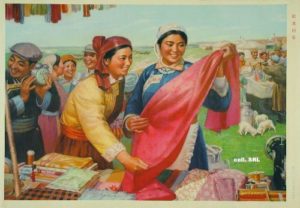 It is the central party-state that for decades asked: is there enough? and has now changed the question to: is it good enough? The party-state asks the question, and provides the definitive answers, and allows no dissenting voices or alternative answers into the public sphere. Whether policy and its local implementations are good enough is decided solely by the top-level design planners thinking like a state, in the name of all citizens.
It is the central party-state that for decades asked: is there enough? and has now changed the question to: is it good enough? The party-state asks the question, and provides the definitive answers, and allows no dissenting voices or alternative answers into the public sphere. Whether policy and its local implementations are good enough is decided solely by the top-level design planners thinking like a state, in the name of all citizens.
What was good enough was rising GDP per capita, and this singular metric has not at all disappeared, as Liu He’s orthodox speech reminds us. Accumulating wealth is still core agenda, but China is now transitioning to a new model, expressed by the vague question: is it good enough?
The good enough concept embraces many objectives: new “green” industries, mass relocations of millions of poor from the “harsh conditions” that make poverty inevitable, and constructing the emptied lands of Tibet into a pristine ecological civilisation of wildlife roaming the ungrazed grassland wilderness. 
The dream of the central planners will be realised. At every point in the 70 years since the Communist Party took power, official ideology has proclaimed the pathway to utopia, and the new era ideology perpetuates that tradition. If anyone dares say past policies often failed, that constitutes the serious crime of “historical nihilism.” No-one may now say the new era policies, especially for Tibetans, are counter-productive repetitions of past mistakes. If the attainment of utopia entails the displacement of the Tibetans, in many districts en masse, that is an incidental detail. The beneficiaries will be the Zhonghua minzu, the whole Chinese race.
Liu He uses a homely analogy, of the humble Chinese wooden bucket, made of vertical planks butted together (like pomegranate seeds): “The Three Critical Battles which China is determined to fight include: 1) preventing and resolving the major risks, 2) conducting targeted poverty reduction, and 3) controlling pollution. As we all know, if a bucket is to hold more water, its shortest plank must be made longer. Likewise, for China to build a moderately prosperous society in all respects, we must fix the shortest plank in our development through winning these battles.”
Tibet is a short plank that needs fixing, if China is to hold more water. Tibet, especially the Tibetan uppermost watersheds of both of China’s great rivers, is to be depopulated in order to provide downstream China with reliable glacier-melt water flow, unpolluted by yak droppings. Rather than regretfully depicting this loss of livelihood, food security and earnings as undevelopment, new era ideology makes this into a positive, the fulfilment of China’s commitment to constructing an ecological civilisation.
Liu He in Davos 2018: “China will continue with smarter, more targeted efforts to lift more people out of poverty. In the last five years, under President Xi’s leadership, we started an unprecedented campaign against poverty. As a result, the number of rural residents living in poverty dropped from nearly 100 million to around 30 million. We have set a target to basically eliminate absolute poverty in three years, which means no single rural resident will be living below the current poverty line. This year alone, China will lift 10 million people from absolute poverty, including 2.8 million who will be relocated from areas suffering from harsh conditions.  These poverty alleviation efforts have a major impact on the distribution of national income. Such efforts embody the Chinese approach to human rights, and will contribute to the global cause of poverty reduction. Third, China will continue its fight against pollution.”
These poverty alleviation efforts have a major impact on the distribution of national income. Such efforts embody the Chinese approach to human rights, and will contribute to the global cause of poverty reduction. Third, China will continue its fight against pollution.”
Pollution begins, on the vast rangelands of the Tibetan Plateau, the moment a sheep or goat grazes the hardy native grasses, and the moment a cowpat drops from a yak’s backside. Ideologically, this is defined as the well-known “contradiction between grass and animals.” Mao was keen on inventing contradictions which only his dictatorship could then solve. Now we have brand new contradictions, for a new era. The agenda has changed.
MEET THE NEW CONTRADICTION
The core contradiction is not that the Party is above the law, as “the logic here is that since the Party is supreme merely so that it can represent the people, and it is the people who are the masters of the nation, the Party does not need to build legal structures that protect the people from something that is their own manifestation of power (the Party). This justifies constraints on individual power-holders while enabling central Party authorities in Beijing to remain unconstrained in their overall authority over key aspects of governance such as legislation, law enforcement and national security.”[5]
With the state and all official bodies now “surnamed Party”, the new contradiction can now be unveiled, as it is this that legitimates the party, placing it as the sole agent of resolving the latest contradiction, until a new one is announced. In Xi Jinping’s words: “the principal contradiction facing Chinese society has evolved…and is now the contradiction between unbalanced and inadequate development and the people’s ever-growing needs for a better life.”[6]
Only the Party can have the wisdom to perceive this as the contradiction defining these times, and the will to resolve it. From this definition of the principal contradiction directly come the programs to dispossess the Tibetans, in the name of poverty alleviation and environmental management. The greatest good must prevail. The land of Tibet is too important to be left to Tibetans.
“From this expression [of the core contradiction] in his work report, Xi derived more strenuous efforts to eradicate completely poverty in the coming decade, which would imply more infrastructure building to link poor and remote areas to urban centres, as well as upgrades to the national education and public health systems. Solving this new contradiction also means a serious, sustained program to curtail environmental pollution and to remediate China’s degraded waters, air, and land. Over the past year, Xi has launched a precursor to a more comprehensive environmental protection program, modelled on his anticorruption campaign and punishing officials who despoil local ecologies.”[7]
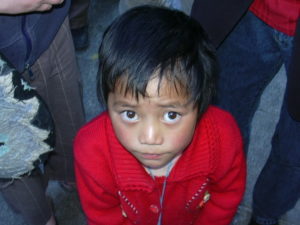 The new principal contradiction is vaguely worded, and could amount to no more than belated recognition that the Chinese are discovering that wealth does not equate with happiness, that clean air really matters to citizens. Vague as it is, this formulation drives the party-state onward. Since the CCP by definition represents the people, increasingly defined as the Zhonghua minzu, the Chinese race, which includes all Tibetans, the Party will inexorably work towards the greater good of the greatest number, while lifting the poor out of their “harsh conditions” in places that are just too unnaturally cold, the air too thin, trees absent, distances too great, urban comforts too far away. If a few must be displaced for the good of the many, this is an objective necessity; and as their displacement is intended to raise their measurable monetary incomes, it is for the good of the dispossessed too. Thus does China progress towards its utopian goal.
The new principal contradiction is vaguely worded, and could amount to no more than belated recognition that the Chinese are discovering that wealth does not equate with happiness, that clean air really matters to citizens. Vague as it is, this formulation drives the party-state onward. Since the CCP by definition represents the people, increasingly defined as the Zhonghua minzu, the Chinese race, which includes all Tibetans, the Party will inexorably work towards the greater good of the greatest number, while lifting the poor out of their “harsh conditions” in places that are just too unnaturally cold, the air too thin, trees absent, distances too great, urban comforts too far away. If a few must be displaced for the good of the many, this is an objective necessity; and as their displacement is intended to raise their measurable monetary incomes, it is for the good of the dispossessed too. Thus does China progress towards its utopian goal.
The thrust of the new contradiction is that the land of Tibet, especially in Qinghai, is physically separate from the lives of the Tibetan people, whose future is urban, and seldom on the land, except perhaps as park rangers enforcing the exclusion of graziers and grazers. This is a much more profound separation than that at Larung Gar Five Sciences Academy, where lay and monastic Buddhists must live now separate lives. The separation of lay and robed Buddhist meditators attempts to impose Durkheim’s sharp separation of the sacred and profane, even though the whole point of Buddhist transformative practice is to discover that what is merely profane (samsara in Sanskrit) is discovered to be unsullied, unclouded, pristine, clear and luminous. Buddhism collapses this separation.
The new era agenda greatly expands the role of the party-state. It is now in the business of providing not only stability, security and economic growth, but the good life, even a better life. This places the party-state, in its own analysis, in competition with the Buddhists, whose whole purpose is how to live a better life. This is an old imperial stance, with deep roots in the dynastic state, long before the CCP. Fearing Buddhism, especially monastic Buddhism, as a competitor goes all the way back to the mid T’ang dynasty seizure of Buddhist monasteries, not only to appropriate their assets but to liquidate the competition for hearts and minds.
Buddhists of course do not see this as a competition, since all people, whatever their nationality or social status, seek happiness and experience confusion, repetition, anxiety and wandering. If there is to be an inner transformation, realising that samsara is nirvana, nirvana is not separate from samsara, the practitioner must separate from society in order to do meditation practice with enough consistency to be effective. To separate from ingrained habits and subconscious path dependencies is required; otherwise one is forever trapped in chasing the contents of the mind, as if they are real. This, however, is a temporary separation, essential to realising the nature of the mind, whereupon in the Buddhist tradition the transformed meditator rejoins society, to help others.
From a Buddhist perspective, there is little to separate the rich from the poor, except that the rich man may well be more anxious, the more he has to protect. There is little difference between Han and Tibetans too, in this all-inclusive perspective, even if cultural differences suggest different entry points onto the path of Buddhist practice. Nothing is solved by separations. To assign separate domains to the lay and monastic, Han and Tibetan, is delusional, ineffective, not how people actually live.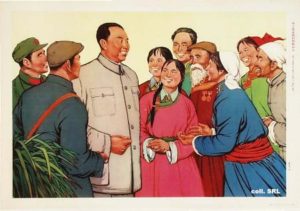
To separate Tibetans from the land is more impactful, because it removes the stewards and their accumulated indigenous knowledge of land dynamics, seasonal cycles, wild herd migrations, climate uncertainty and how to live a good life while maintaining long term sustainability. Urbanising rural Tibetans reduces them to a marginal precariat, separated not only from their productive past lifeworlds but also from meaningful participation in the industrial economy China is building in Tibet, based on infrastructure construction and mineral extraction, all of which require of their workers literacy in written and spoken Putonghua Chinese.
China’s separations will fail, as they have in the past. Take Larung Gar Five Buddhist Sciences Academy as an example, and its periodic spasms of state imposed destruction, in 2001 and again in 2017. That’s the next blog in this series of two.
[1] Jessica Batke, Party All the Time: Governance and Society in the New Era, China Leadership Monitor #55 Winter 2018, https://www.hoover.org/research/party-all-time-governance-and-society-new-era
[2] British Medical Journal, 2000 Nov 4; 321(7269): 1153–1154.
[3] 留学生(Overseas Students) 2011 #8, 像石榴籽那样紧紧抱在一起’——一四三团民族团结纪实, : 林东风, 兵团工运 (BING TUAN GONG YUN), 2014, 10: 36-36
[4] https://www.chinausfocus.com/focus/china-this-week/ 26 Jan 2018
[5] Susan Trevaskes, China’s party-led rule-of-law regime, 2 October 2017 http://www.eastasiaforum.org/2017/10/02/chinas-party-led-rule-of-law-regime/?utm
[6] Work Report to the 19th CCP Congress, October 2017
[7] William C. McCahill Jr., China’s “New Era” and “Xi Jinping Thought”, National Bureau of Asian Research October 2017, http://www.nbr.org/research/activity.aspx?id=811
